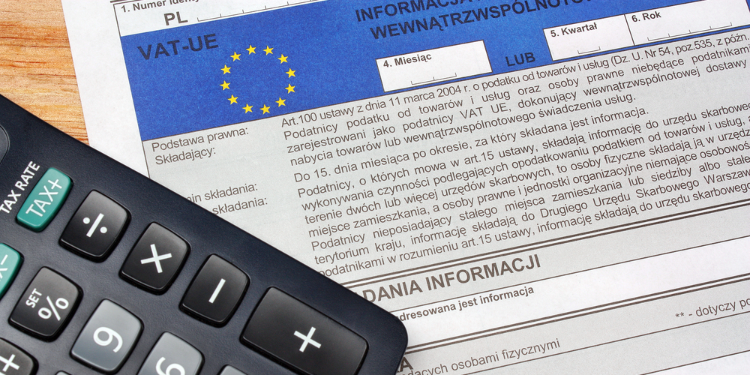
Most European countries, particularly those of the European Union (EU), have higher tax rates than other global powerhouses. In 2019, taxes accounted for 40.1% of the GDP of EU Member States. Even though the pandemic has led to a significant rise in public expenditure and a tax decline, there's still a huge gap between countries with high and low tax rates. So which are currently the most attractive countries?
Direct and indirect taxes
These are two pillars of the European tax policy. Direct taxes are controlled by the Member States. In contrast, indirect taxes relate to "the free movement of goods and the freedom to provide services within a single market, according to EU regulations.
Direct taxation includes income tax, corporate tax, property tax, and housing tax. EU states are free to set their tax rates, choose how taxes are collected, and how the funds will be used or redistributed. While the States have complete jurisdiction in this matter, they are still expected to work together to fight tax evasion and prevent double taxation. The EU is also making significant efforts for a more efficient harmonisation of tax rules for companies and individuals. The Europhile States have already made considerable progress, but they are criticised by those fearing EU interference in their sovereign powers.
But harmonisation is perhaps even more necessary when it comes to indirect taxation. The EU guarantees and ensures fair competition on the European market. The different tax systems must in no way mean discrimination for any company or individual, including workers and consumers. The EU is also deeply involved in the harmonisation of VAT and excise duties. These are defined by the European Commission as: “indirect taxes on the sale or use of certain products, including alcohol, tobacco and energy". Revenue from excise duties accrues entirely to the countries to which these duties were paid.
Which are the least and most attractive European countries?
France is the EU state with the highest tax rates, accounting for 47% of GDP in 2019 (Eurostat figures). France is followed by Denmark (46%), Belgium (45%), Sweden and Austria (43%), Finland (42%), Italy, Greece and Germany (41%), Luxembourg (40%). These are the ten States with tax revenues representing or exceeding 40% of GDP.
In between, there are countries with tax revenues ranging from 30 to 40% of GDP, such as the Netherlands (39%), Croatia (38%), Portugal, Poland, Czech Republic, Hungary (36%), Spain, Cyprus (35%), Slovakia (34%), Estonia (33%), Latvia (31%), Lithuania, Bulgaria (30%). In the most attractive countries, taxes do not exceed 30% of GDP. Unfortunately, only two EU countries fall into this category: Bulgaria (26% of GDP) and Ireland (22%).
These different tax rates are a significant issue at a time when the EU is seeker better harmonisation. In June 2021, negotiations between G7 finance ministers led to a historic agreement: efforts for a global corporate tax of at least 15%. But this does not sound good for the most attractive countries for businesses, such as Ireland with its 12.5% corporate tax rate (in practice, giants like Apple have only been able to pay 5% or even less). The same applies to Luxembourg, which officially has a 25% corporate tax but reduces this rate to 1 or 2% to allow optimisation. Bulgaria, Hungary and Switzerland, with rates (respectively) 10%, 9 and 8.5% corporate tax, have similar issues. Still, France remains the country with the higher corporate tax rate (estimated at 32.02% in 2020), which is the highest among OECD countries. Portugal hits nearly as hard (30%).
Although they have succeeded, since 2006, in agreeing on VAT (with a minimum threshold set at 15%), EU Member States remain divided on corporate tax policies. The objective is clearly to fight tax evasion and fraud. But there is no question, for States with lower tax rates, of losing attractiveness. Countries with high tax rates, on the contrary, have every interest in seeing the G7 agreement become the norm.
What about non-EU countries?
In Monaco, there is no income tax or corporation tax. In reality, the Principality makes up for it on other levies (taxes on insurance, property rental, transfer and inheritance tax, VAT, etc.). It's nearly impossible to compete with Monaco. Still, there's a lot of competition among EU countries. For example, tax accounts for only 9.8% of Switzerland's GDP, which is much better than Ireland (22%). Meanwhile, the rates are 16.9% in San Marino, 18.1% in Albania, 19.2% in Ukraine, 17.3% in Moldova, 20% in Bosnia and Herzegovina, 21.8% in Iceland, 23% in Norway, 24% in Serbia and 24.9% in the United Kingdom (according to World Bank reports from 2019).
A lower tax burden than France or Germany does not always guarantee growth. While Switzerland attracts companies, investors and capital, Ukraine remains stuck in a politico-social crisis, with the ever more significant threat of Russian interference. In Albania, the pandemic is aggravating a demographic crisis and a brain drain. With an ageing population that still bears the scars of the years of dictatorship, the economy is struggling to stabilise. Meanwhile, the United Kingdom seems to be mired in a series of scandals and crises against the backdrop of Brexit and the health crisis, all having a significant impact on its economy.
Is the European tax harmonisation utopia? If it becomes a reality, will it only apply to EU member states, or will it extend to the whole continent? Tax evasion and fraud generate colossal losses for States. On the other hand, ethics and morality make marginal tax optimisations and other complex financial arrangements that make corporate tax (especially for large groups) less problematic. However, the road to harmonisation seems perilous. Between the champions of taxation and the kings of the tax refund, the negotiations are going to take time.



















